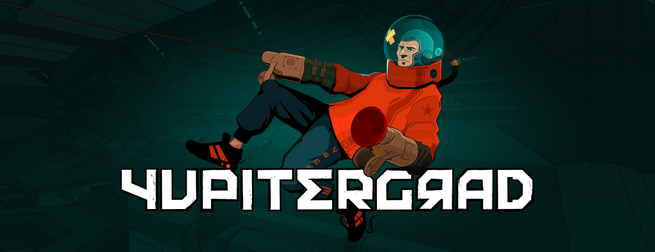Whether you are developing software for enterprise customers or games for consumers, securing investments for your VR project can be a daunting task. We’ve gathered insights from voices across the industry to learn how different studios and companies acquire funding to build VR content. In part four of this series, we talked with Jakub Matuszczak, COO of Gamedust about the specific challenges facing VR game developers.
Gamedust was founded in 2015 as the VR division at Setapp, a Polish software studio. Since striking on their own in 2017, Gamedust has published hit titles such as Neverout, Overflight, Spuds Unearthed, and most recently, Yupitergrad.
What was the top challenge you experienced related to funding your VR project and how did you overcome it?
Our main challenge for Gamedust with Yupitergrad was to balance the cost of developing a high-quality video game with achieving projected sales results. The budgets of virtual reality games are not much different from other independent video game projects yet demand even greater skills regarding optimization and technical knowledge. However, the market for these games is significantly smaller. While making the decision to start the Yupitergrad development funding from HTC Vive helped us a lot – they mitigated the risk of achieving break even with our own investment.
What did you wish you knew when you first started developing VR solutions?
That the market will be constantly changing and there won’t be any standard or “generation cycle” like in the traditional video games development. The market is very diversified, with multiple devices on the market, each with different standards. Also – the devices change rapidly – Gamedust started with Oculus Gear VR, only 5 years passed and now its successor – Oculus Go will no longer be supported. The market is constantly changing and new solutions emerge and go.
What one piece of advice would you give to developers looking for investors/funders for their projects?
For video games, the crucial point is to define and be aware of the USPs (unique selling points) of the project. Whether it’s core gameplay mechanics, stunning art style or replayability – each game needs to have defined business value which we could compare to other games on the market. For example, in Gamedust we knew that we have great movement mechanics and distinctive cell-shaded art style and retro-futuristic setting in Yupitergrad, but we also did the research of other VR puzzle platformers titles. Also – timeline, budget, and PnL including the risks for the project completion are very important for the investors. It shows that the developer learned his lesson while doing the research.
Many developers face investors/funders/other stakeholders that are often concerned that VR projects won’t pay off. How were you able to secure buy-in from your key stakeholders?
Gamedust is in a comfortable situation – our key stakeholders believe in the emerging market and love the thrills of the startup companies. They understand that being at the forefront of the revolution matters and also understand particularly the VR market very well. Apart from that, what helps a lot is that they are also avid fans and users of the technology. They understand that each of Gamedust games is an R&D project – there are no industry standards or good game design practices established for the VR video games – contrary to the products dedicated for the traditional PC and console video games market.
What needs to be done to drive more awareness for VR gaming?
In the case of video games, there are two ways. First – supply of more high-quality content designed with virtual reality technologies in mind – if there are games that are fun to play and available only on VR devices – users would be more eager to check the hardware – that’s our mission at Gamedust. Apart from that – education and accessibility – people must be aware that using VR is not “rocket science” technology. High – quality standalone headsets like Vive Focus Plus help a lot with such adoption.
Why did you choose to create for the market you did?
The market has extreme growth potential. As I’ve mentioned before, VR becomes more and more accessible and more mainstream. Other markets are well saturated and the virtual reality market will plummet soon, so being at the forefront of this revolution gives Gamedust a competitive advantage – with established pipelines, knowledge and good practices, and – most of all – high-quality games.
Aside from funding, what other areas of support did you receive from Vive that were critical for bringing your content to market?
Our developer relations team provided great support with initial idea verification. During the production of Yupitergrad we received a lot of feedback about the gameplay, visuals and overall project progress. Also, we discussed the scope and proper price point for the created content. Considering VR has almost no established practices – especially in terms of video games business models, receiving advice from platform holders on every step of development helped Gamedust to avoid some mistakes along the way. Having HTC Vive as a partner with insights about the market is an invaluable benefit – it could even help to correct initial assumptions made by the developer.
Additional insights on securing funding can be found in our previous post from voices at HTC VIVE, Nanome and 3Data.



